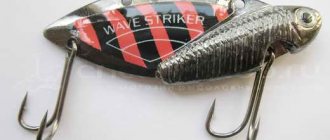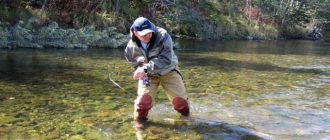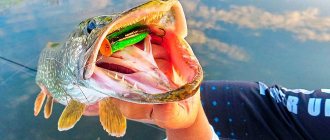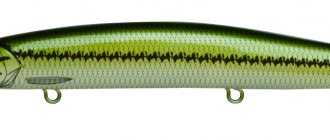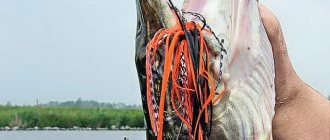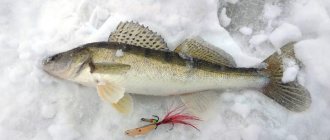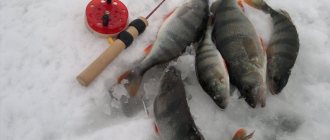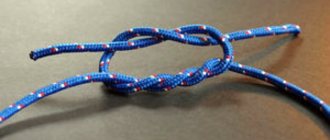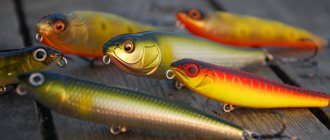Spinning wiring: ways and methods
Content
Let's look at how to do spinning wiring. In most cases, fishing with spinning wobblers and their wiring is significantly different from fishing with spinners or microjigs. Moreover, the same types of spinning retrieves performed by different anglers or by the same angler using different gear will differ noticeably from each other. The most indicative in this regard is twitching - a wiring technique that changes not only for each wobbler model, but also taking into account the type of fish, biting activity and other factors.
Thus, we can talk about the general principles of performing different types of wiring, suitable for certain baits and fishing conditions. And the criterion for correct wiring is the size of the catch.
Different baits require different types of wiring
Uniform wiring
Uniform retrieving - retrieving a bait with a spinning rod at a constant speed by reeling out the fishing line with a reel. Wiring speed can vary from very slow to very fast. In turn, the speed of the retrieve determines the depth of the bait: the faster the retrieve, the sooner the bait will reach the surface of the water.
Uniform wiring is a simple type of wiring with which it is recommended for beginners to start getting acquainted with spinning. Although simple, uniform wiring can be quite effective. This applies to fishing with rotating spoons with a core weight, for which this type is considered to be practically the only fishing method. In addition to rotating spoons, using uniform fishing, you can fish with:
- front loaded spinners;
- oscillating spoons;
- wobblers with their own game;
- active plastic baits and many others.
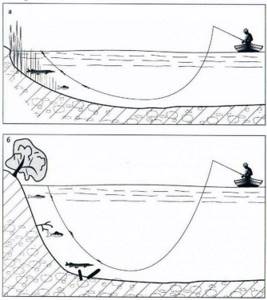
Uniform wiring of the wobbler with different depths
Posting spinners
If fishing takes place in the bottom layer, and most often this is the case, after casting you need to let the spoon fall to the ground or onto the stones, and then lift it with a smooth swing of the spinning rod and start retrieving. In this case , you can be sure that the bait is moving in the desired horizon . You can drive the lure even higher.
For example, if you need to make a retrieve in the middle layer of water , you can first cast and determine how long it takes for it to sink to the bottom. If the spinner falls in 8 counts, then after splashing down you need to wait 4 counts for it to drop to half-water, after which you can immediately begin to rotate the reel handle.
Uniform
Both rotating and oscillating spoons work well on a uniform retrieve . When animating a pinwheel, there is much more drag as the petal rotates. A good spinning rod transfers this perfectly into the hand. This allows you to select the desired speed of rotation of the reel handle. Slow retrieval of the bait is often necessary to entice a predator to bite.
Important! Based on the resistance of the rotating spoon, you can choose a reeling pace so that it moves at a minimum speed, but still works.
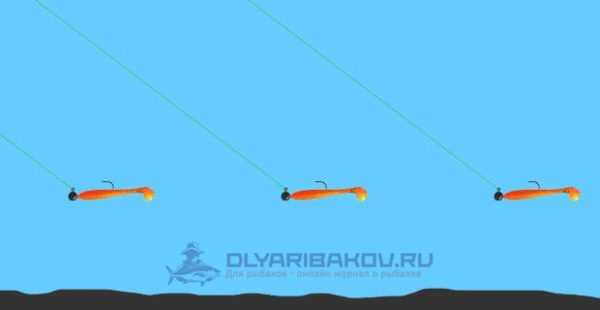
Wavy (uneven)
Wave-like wiring is one of the best options for animating turntables. The petals of these spinners rotate on an uneven retrieve, sometimes faster and sometimes slower, and this often helps to revive the interest of a predator when he is not very inclined to peck. You can also use this type of animation when fishing with oscillating spoons.
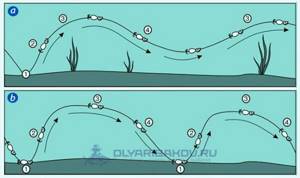
Stepped
Few people use stepped fishing when fishing with spinners. Meanwhile, it brings good results . When fishing with rotating spoons, it is important to use high-quality models , the petals of which immediately wind up after you start reeling in the fishing line. Front-loaded turntables work very . Due to the fact that they fall to the bottom head down, their petals continue to work until they touch the ground.

Uneven wiring
Uneven wiring is a logical development of uniform wiring. In order to attract the attention of a predator, the speed of the retrieve changes randomly; jerks with the rod and stops of the bait are added to the retrieve, creating the chaotic movement characteristic of living nature.
Read more
How to catch carp with a spinning rod?
The number of options for uneven wiring is practically unlimited, so finding out how to correctly make uneven wiring with a spinning rod can only be done experimentally.
Stepped wiring
Stepped wiring is associated with jig fishing. This is not entirely true, except for jig baits, you can use a step to move completely different baits in different layers of water.
Retrieving a floating wobbler with stops creates steps that are opposite to those of a jig - when stopping, the bait does not sink, but floats up. Using a wobbler, you can implement wiring with a step height from the working depth of the wobbler to the surface of the water. Bites can occur at any time during the retrieve.
Stepped wiring is carried out similarly to jigging with active sinking baits:
- oscillating spoons;
- sinking wobblers;

Stepped wiring of a floating wobbler
- bladebaits (cicadas);
- spinerbaits.
For step-by-step retrieving, it is desirable that the bait has a play not only during retrieving, but also during a pause - when falling.
Spinning technique
Wiring speed
Based on the speed of reeling for the main group of baits, three options can be simplified: slow, medium and fast reeling. True, sometimes - for example, when fishing for asp on horseback in the Devonian - very fast wiring can be used. Or vice versa - as when fishing with a fly with a loaded float - the slowest.
It is clear that a fast retrieve will seduce only active fish, a medium retrieve will also excite “ordinary” fish, but a slow retrieve will perhaps additionally irritate even slightly lazy predators. The bait itself is selected according to the required wiring speed.
It remains to be recalled that the concept of “speed” refers not only to uniform wiring, but also to all others. After all, even on a “step”, with the necessary movement of the rod you can raise the bait faster or slower, and by choosing the weight and shape of the sinker you can easily change the speed of its fall.
Wiring direction
Often, when choosing the direction of casting and fishing, we have to take into account some external factors that in one way or another affect the effectiveness of our fishing.
For example, if there is a current , the following options are possible: fishing with the current, across the current, along the “arc” or downstream. Agree, here we must take into account the game of the bait, the orientation of the fish, its preferred direction of attack, the fishing conditions, and the fishing options.
In shallow water, the optimal direction of wiring relative to the bright sun is especially important. As practice shows, it is best to throw “in the sun” and to the sides - then the wiring goes “from the sun”, and it is easiest for a predator to detect and attack our bait. Otherwise, you may simply not wait for a bite, because in a certain sector the sun simply blinds the fish. By the way, us too – that’s why polarized glasses will especially help here. In them, the eyes get tired less, and the nearby underwater picture is seen better.
Often you have to choose a convenient direction of wiring relative to the wind. After all, a strong side wind nullifies all our efforts, preventing us from casting and holding the bait normally, or feeling the bite. In such cases, you just need to look for another place.
Twitching
Twitching, or twitching (jerk) wiring, is a method of animating wobblers such as minnows and poppers. It is carried out by jerking the tip of the rod with different amplitudes and frequencies, with pauses between them. Under the influence of water on the blade of the wobbler during amplitude movements of the rod, the bait deviates from the direction of the wire, first in one direction, then in the other, creating the illusion of a rushing fish.
Today, this is one of the most popular and productive methods of spinning fishing.
The twitching rule, common to all baits, is that the less active the fish, the softer the retrieve should be, and the longer the pauses between twitches.

Twitch wiring options
Jig wiring
Well-known to the vast majority of anglers, jigging involves guiding the bait in a step, taking into account different characteristics:
- bait speed;
- bait fall time;
- length of the horizontal part of the wiring and others.
The attractiveness for fish, and therefore the high efficiency of jigging, is explained by the constant control of the bottom, where the fish usually stays, and the presence of a vertical phase, during which most bites occur.
A huge number of jig baits allow you to catch almost any fish using this method - from pike perch and catfish to crucian carp and roach. Fishing can be done in most bodies of water.
Control of wiring with a spinning rod
To paraphrase a well-known expression, the main thing when wiring is control, control and once again control... And here it is appropriate to once again recall such a valuable quality of tackle as sensitivity. After all, only sensitive tackle will provide us with close contact with the bait and guarantee complete control of the retrieve - and therefore effective fishing.
What exactly needs to be controlled during wiring?
Correct bait game
The bait must play! And sensitive gear must constantly signal to the fisherman what the bait is doing at one time or another, how it moves and where it is. Only in this way can real control of the wiring be carried out.
All models create some kind of resistance, and sometimes even noticeable vibrations, which, with high sensitivity of the tackle, are transmitted “to the hand” of the spinning rod and help him evaluate the movement of the bait. After all, if the spinner “doesn’t start” or a blade of grass gets stuck on the wobbler, and we don’t know it, all our further actions lose meaning. If the tackle allows you to feel that the bait is going “wrong”, you can try to “shake” it with short and strong jerks of the rod. Grass and leaves are often “cut off”, and the bait begins to work correctly again. Otherwise, you just need to re-throw it faster.
The issue of “sense of bait” is especially acute for fans of “ultralight”. For example, almost all micro-leaves are difficult to put into operation - therefore, on ultra-light spinners they have to be specially “started” by vigorously pulling the rod. And you can feel the rotation of such a petal only with the most sensitive fishing rod.
Wiring depth and bottom hardness
As a rule, the fish stands close to the bottom and is reluctant to rise above some “comfort limit”. This means that for maximum catch, the bait must be kept in this bottom layer all the time.
For those baits that are evenly drawn above the bottom - and this is, for example, most spinners and spinners - controlling the depth of the retrieve is quite simple. For example, during a “locked” pause, these baits fall down at a low speed of 20-30 cm/s. That is, if, during a pause, touching the bottom is recorded in the second or third second, this means that the bait is moving correctly - half a meter or meter above the bottom. In this way, you can periodically, two or three times per wiring, check and, if necessary, adjust its depth.
A different approach is used in jig fishing, where the bait already falls to the bottom with each “step”. Therefore, a special “counting” technique is needed here. It includes both the initial determination of the depth at the casting point and further control over its changes.
In general, jig fishing is a constant counting of seconds. After all, having determined experimentally the speed of free fall of the bait - for example, for a load of 15 g it is approximately 1 m/s - you can easily determine the depth at the casting point from the time of fall. In this case, 3 seconds will correspond to 3 meters, 5 seconds to 5 meters, etc.
Considering that the jig bait then “glides” on a stopped fishing line that has a certain resistance in the water, the vertical speed of its fall is significantly reduced. The specific reduction depends on the thickness of the fishing line and the length of its underwater part (which, in turn, depends on the casting distance, depth and strength of the current). As a result, for a load of 15 g, the vertical component of the falling velocity can be only about 30 cm/s. It must be said that - taking into account the height of the rise and the time of fall - this is an approximate optimum.
After all, practice shows: for the fish to catch up and grab our bait, it takes an average of 1-3 seconds. The specific time depends on the mood of the predator: usually it is 1 second for an active specimen, 2 seconds for a regular specimen, and 3 seconds for a lazy specimen.
Taking into account the fact that all the fish are kept in the bottom layer and there is no point in raising the bait higher than half a meter or meter above the bottom - a speed of 30 cm/s just provides the required falling time of 1-3 seconds.
Thus, we can only control this time during the posting process. It is clear that its increase by 2 seconds means an increase in depth by about half a meter, and vice versa. If the time of fall does not change, then the depth remains approximately constant. In this way, in just one trip you can get a first approximation of the picture of the depths in the fishing area.
Moreover, with sufficient skill, you can even determine the structure of the bottom by the hardness of the blow: silt, sand or stones. Agree, it turns out absolutely complete clarity.
Therefore, this already implies an undoubted advantage of jig fishing - it allows you to “in passing” explore the bottom in the desired area. This means that the jig is optimal for exploring new places.
The habit of counting also helps with weak bites, when the bite occurs without a “blow.” For example, all the time the bait fell to the bottom in the second second - and then suddenly in the first. We hook it right away, because such a disruption in rhythm often turns out to be a bite. Yep – that’s right!
Wiring range
Ideally, you can train yourself to count not only the time of fall on each step, but also the number of revolutions of the coil. This helps a lot in determining the underwater terrain and is not as difficult as it first seems. For example, knowing at what distance the edge begins, you can tap it more carefully, you can accurately detect the location of grass, snags and other interesting underwater objects.
However, if you really count seconds and revolutions all the time, you will get confused. Therefore, in the vast majority of cases, at least simplified range control is sufficient. To do this, we “divide” the entire cast into 4 conditional equal parts and get 5 degrees: at the “throw”, at three quarters, at half, at a quarter and “under the feet”.
Range control allows you to more accurately determine the location of the bite. In the future, it is at this distance that you can expect other bites from schooling predators - perch and pike perch. Or this may indicate a typical ambush site for pike, to which, instead of the caught specimen, a “replacement” will approach after some time.
Sometimes in such cases, to save time, they even use a technique such as fixing the casting distance. To do this, we accurately determine the desired distance - for example, to the edge - and press the desired layer of fishing line on the spool with an elastic band or, in extreme cases, thread the fishing line behind the clip. Then the next cast will be possible only up to this limiter.
Bottom relief
Not only do you need to control the depth and hardness of the bottom with each retrieve. You also need to be able to correctly analyze this data - and using it to visually represent and remember the bottom topography in the fishing area.
After all, the main thing for fish is not the depth itself, because it is the same in many places. It is much more important to find suitable places for feeding, shelter or ambush - which, as a rule, are “tied” to changing terrain and different bottom hardness. If we manage to “feel” all this, then half the success is evident. After all, the main rule of a fisherman is not to try to catch fish where there are none.
With a certain skill, “reading” the bottom and “drawing” the relief is no longer particularly difficult and even becomes an automatic habit. And then, based on minor changes in the “score,” it is possible not only to accurately determine the depth of the reservoir and the general relief, but it is also possible to find and “measure” all local holes, elevations, channel gutters and edges.
They say about some spinners that they “see” through the water - this is exactly the case when sensitive gear replaces the eyes. Try to “get close” to the tackle, imagine it as your additional sense organ.
Then after some time, having invited friends to go fishing, you can confidently instruct them something like this: “Throw across the current. About sixty meters from the shore there is a far edge and a drop from four to six meters. There is pike perch up to 2 kg. About forty meters away is the nearest edge and a rise from five to four meters. There are pike up to 3 kg. And about twenty meters away at a three-meter depth there is a snag, behind which there is usually a school of perch weighing 200-300 g. Don’t be shy, guys, catch it!”
And when your friends really catch it all, this will be your finest hour!
Classic wiring
Animation of the bait in classic fishing is carried out using a reel. After the bait touches the bottom, the angler makes two to four turns of the reel at a fairly fast pace. This is followed by a pause until the bait falls to the bottom, after which the cycle repeats.
Read more
Correct wiring of wobblers
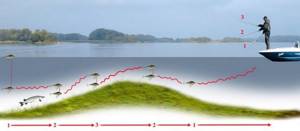
Jigging with a floating wobbler
Most bites occur in the free-fall phase of the bait, so its weight is selected so that the fall time is from two to four seconds. If the bait falls to the bottom faster, the predator does not have time to react to it, and if it falls slower, the bait rises too high from the bottom.
Classic wiring is most effective if the movement of the bait is directed from the shallows to the depths.
Various posting methods
Uniform wiring
Uniform wiring is the simplest wiring imaginable. It does not require any special skills from the fisherman or much experience. It is enough just to know the principle of spinning fishing. And the performance of the bait is determined not by the fisherman, but by the features of its design and shape. With this type of fishing, after casting the bait, wait until it drops to the required depth and begin to slowly and evenly rotate the reel. You can take short breaks from time to time and then continue reeling. Typically, the predator’s bite occurs precisely at the moments of such stops.
Stepped wiring
Stepped wiring is carried out in two ways - with a reel and a rod. The essence of this wiring is for the bait to move in a zigzag pattern, lifting off the bottom and falling onto it again. With a coil, this wiring is carried out with pauses between windings. Wait until the bait sinks to the bottom, make 2-3 turns of the reel, wait until the bait sinks to the bottom again, again 2-3 turns. The interval of zigzag movement of the bait will directly depend on the speed of rotation of the reel and the number of revolutions between pauses. You can also carry out this method of wiring with a fishing rod. That is, after the bait has fallen to the bottom, we make a sharp jerk with the rod, thereby tearing the bait off the bottom, trying not to lift it very high, by 15 cm, no more. We reel in the weakened fishing line, let the bait land on the bottom again and jerk again. At the same time, you need to try not to lose tension on the line so that you have complete control over the bait. Stepped wiring is the most popular among jig baits, and perhaps the most catchy. The fish are very attracted to the action of the bait, which resembles the movements of a wounded, weakened fish trying to escape. Who would refuse such easy prey? The turbidity when the bait falls to the bottom after each jerk or reeling and the noise created by this fall also provokes the predator. The bite usually follows after the bait hits the bottom.
Aggressive wiring
Aggressive wiring is reminiscent of stepped wiring, but this wiring is sharper, the jerking of the rod resembles hooking, and the action of the bait imitates a fish that is trying to quickly escape and then returns to the bottom with oscillatory movements. As always, when the bait touches the bottom, an attack from a predator usually follows. This wiring method works best when the fish are highly active and in warm water, with a temperature of more than 15 ° C.
Wiring for demolition
Demolition fishing, on the contrary, is more catchy at low water temperatures. The bottom line is that wiring is carried out by the current. It is important to choose the right weight. If the bait is too heavy, it will either not be carried by the current at all, or it will plow through the bottom and often get caught. A bait that is too light will stay high above the bottom, which is also bad. You need a weight at which the bait will go directly above the bottom, but not burrow into it.
Jumping wiring
You can stir up a lazy predator with jumping wiring . It quite often brings success, while other postings do not produce results. This wiring is performed by sharp twitching of the rod, during which the bait should come off the bottom no more than 5-10 cm, as if jumping. Underwater, this bait play is reminiscent of a mule fish rummaging around looking for food. True, such slow fishing takes a lot of time and does not allow you to quickly catch promising places.
Twitching
Twitching is wiring that does not have any strict rules and conditions. This is a set and mixture of various jerk wiring. Using a combination of various movements and jerks, they try to attract the attention of the predator and provoke it to attack. One of the twitching options is acceleration-deceleration. We wait until the bait drops to the desired depth and begin to slowly reel in the fishing line, then we accelerate and move the bait at an accelerated pace for several turns, after which we return to the original speed. Let's say we make 5 turns of the coil at a slow pace, and 3 at a fast pace. The acceleration-deceleration method is performed only with the help of a reel; other twitching techniques can be carried out both with the help of a reel and with the help of a rod.
Stop and go
Stop and go is a very popular wiring. Works very well with compound wobblers. The technique is as follows: after casting, we begin to rotate the reel as slowly as possible, on the verge of playing the wobbler. We make 4-5 turns with the reel, after which we stop the reeling, wait a couple of seconds and make a small jerk with the tip of the rod, which can also serve as a hook if a bite occurs. And the bite usually occurs just when the bait stops, then we continue to rotate the reel again, 4-5 turns. We repeat these steps until the bait is returned to the fisherman.
The only disadvantage of this wiring is that due to its slow execution, a lot of time is spent on one wiring and searching for the location of the predator using this wiring takes a lot of time. But this wiring can provoke even an inactive and sedentary predator to bite.
Slow wiring
Slow retrieving is performed similarly to the classic one, but there is a pause of 1-3 seconds between the bait falling to the bottom and the next retrieving cycle. This wiring is shorter (1-2 turns of the coil) and slower.
Slow retrieving works well in cold water, when the fish are inactive and do not have time to react to a fast-moving bait. In places with a clean bottom, it is good to periodically supplement the wiring by slowly dragging the bait along the bottom for a short distance. This technique works especially well on pike perch and pike perch. Slow retrieval in the autumn sometimes attracts peaceful fish - bream or carp.
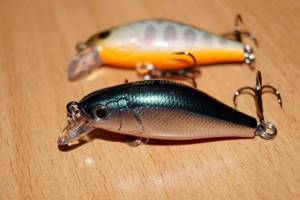
Classic wobbler wiring
Fishing by fish species
Depending on the type of bait and the fishing object, one or another spinning spinner is used in the water column. If there is no bite, you need to change your bait tactics, and if none of the methods work, change the bait itself.
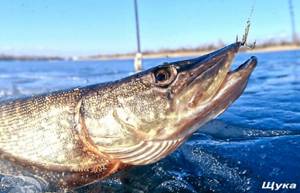
Wiring when catching non-predatory fish
Fishing for peaceful fish is also carried out by fishing. Stepped tactics work well - at a slow and fast pace.
What kind of fish can be caught in spring fishing?
The fisherman should know that spring fishing is an exciting activity that involves the use of active fishing methods:
- Jig fishing for chub with wire;
- Bream;
- Roaches.
American wiring
American retrieving is carried out similarly to the classical one, but to animate the bait they use not reeling with a reel, but movements with a rod. After the bait falls to the bottom, the angler pulls or jerks the rod, and then returns it to its original position, while simultaneously picking up the resulting slack in the fishing line with the reel. The next time the bait touches the bottom, the wiring cycle is repeated.
The advantage of American wiring is the close contact of the angler with the bait and the ability to more easily diversify the wiring with the movements of the rod.
The disadvantage of American wiring is that when the fishing line is reeled in, it is difficult to detect bites, and it is at this time that the fish most often bite.
Wiring for the outlet leash
When fishing with a retractable leash, you can successfully use the classic stepped retrieve . The advantage of this equipment over the classic jig rig in this case is that the bait rising from the bottom will fall much more slowly due to the fact that it is located on a separate leash and the sinker does not pull it down.
But the maximum advantages of a retractable leash are revealed with other methods of animation.
- The game is on the spot. After casting, you need to let the bait sink to the bottom, and then give it movement by swinging and twitching the tip of the spinning rod.
- Dragging along the bottom . You need to rotate the reel handle at such a speed that the sinker plows the bottom without leaving it. A silicone bait on a retractable leash will move nearby, which with its game will tempt the predator to attack. A sinker plowing the bottom soil raises turbidity, which attracts the attention of pike, pike perch and other fish.
